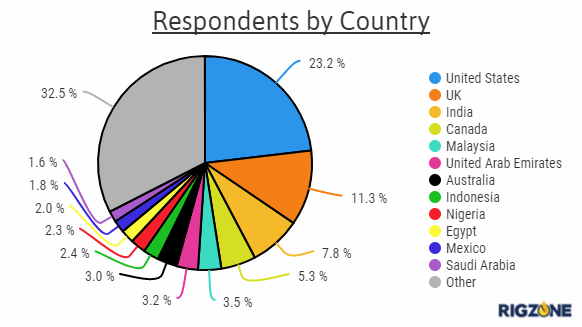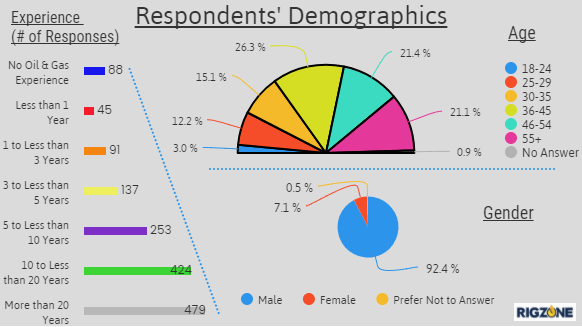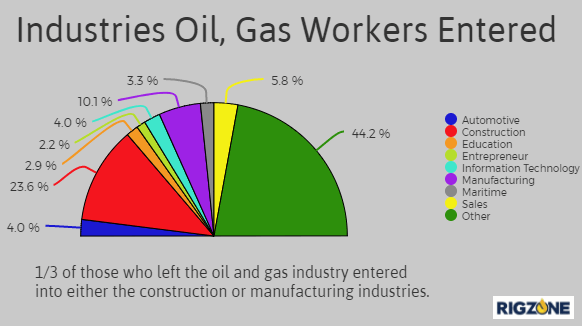Just as the tally on global oil and gas layoffs due to the industry downturn surpassed the 440,000 mark, Rigzone was hard at work developing a plan to reach those who had left the industry. With oil prices plummeting to historic lows in February 2016 and drilling activity stalled, many oil and gas professionals were exiting the industry – both voluntarily and involuntarily.
Results from Rigzone’s most recent global survey address the exodus of oil and gas workers – determining why they left, where they went and whether or not they will return. It also provides a pulse check on how they’re feeling about the industry overall.
The survey garnered more than 1,500 responses from nearly 100 countries. Almost one-quarter of respondents (23 percent) came from the United States, 11 percent from the UK and about 8 percent from India.

Experience level among respondents was varied, with the largest chunk (32 percent) having more than 20 years of experience. More than half of respondents (60 percent) have at least 10 years of professional oil and gas experience. Males dominated as they accounted for more than 90 percent of respondents. This may not be a direct indicator of, but certainly serves as a parallel to the underrepresentation of women in the industry as a whole. And the Gen Xers and Baby Boomers made up the largest portion of respondents: ages 36-45 (26 percent); ages 46-54 (21 percent) and ages 55 and older (21 percent).

Downturn’s Aftermath in Workforce
As one delves into the survey results, it’s evident that the industry’s “new normal” spurred by a sharp decline in crude oil prices meant a huge loss of talent in the workforce. According to the survey, 38 percent of respondents are currently unemployed, having most recently being employed in oil and gas. This is just a macrocosm for an industry whose global workforce has had hundreds of thousands of layoffs since late 2015.
One-third of respondents said they were still employed in the oil and gas industry, while 18 percent stated they were currently employed in another industry. About 3 percent of respondents are retired.
The survey findings also reveal how the downturn affected the mindset of workers. Of the respondents who are still employed in the oil and gas industry, more than half (54 percent) said they have considered leaving due to the downturn. It’s likely the stress of doing more with less in addition to the uncertainty of job security probably contributed to their decision.
Of the 38 percent of respondents who said they were unemployed, having most recently worked in oil and gas, more than half of them (52 percent) lost their jobs due to layoffs or workforce reductions; while one quarter (24 percent) lost their job due to company restructuring. Seven percent stated their reasons for no longer being employed were related to contract or project-based work.

Be sure to check out the next feature based on findings from Rigzone’s worker exodus survey in which we’ll explore the industries that departed oil and gas workers migrated to as well as hear some of those workers’ stories and experiences.
Methodology: Rigzone conducted the worker exodus survey using online survey tool SurveyMonkey. The survey was executed via email to Rigzone’s member database as well as the company’s social media platforms from May 11 through May 18 and garnered more than 1,500 responses from more than 100 countries.
source? http://www.rigzone.com/news/oil_gas/a/151257/Who_Are_the_Oil_Gas_Industrys_Departed_Workers
